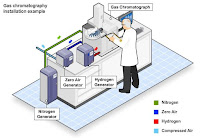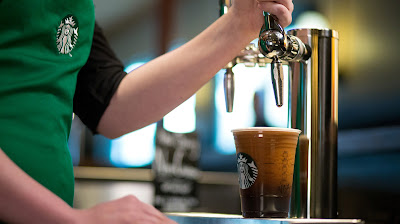
Aluminum is a highly malleable material, which is readily shaped
for any number of purposes. The aluminum extrusion process is key to shaping
aluminum, and it must be completed in an inert environment to reduce the
formation of oxides. Learn why this is important and how facilities can reduce
the risks of health hazards in an inert environment.
How
Aluminum Extrusion Works
Billets of aluminum are first heated to above 800 degrees Fahrenheit
to become malleable, then coated with a lubricant so the molten metal will not
stick to the extruding ram.
The ram presses the aluminum billet through a die, which is cast
in a given shape. As the aluminum passes through the die, liquid nitrogen flows
over the metal to prevent oxides from adhering to the aluminum. This also
extends the lifespan of the die by cooling it. In some operations, nitrogen gas
is used instead of liquid. While the overall purpose is the same -- to keep out
oxides, which can cause the extruded aluminum to crack -- the gas does not
cool the die.
The shaped aluminum passes through the die, then exits the
press where its temperature is taken. Temperature records help maintain press
speeds, for plant efficiency. The extruded aluminum pieces are then transferred
to a leadout table and a puller, where the metal is cooled using
fans. Some mixtures of aluminum are cooled with water as well as air.
The cooled and cut aluminum is then stretched via a stretcher, a
step that increases the hardness and strength of the finished piece. Finally,
extruded aluminum pieces are cut for precision and aged under controlled
temperatures via heat treatment.
The entire process resembles a play-doh modeling kit, where the
dough is squeezed through a press and comes out in a tube or a star shape, for
instance.
Extruded aluminum pieces are used in a variety of industries,
including railway cars, lightweight automobiles, bridge decking, solar panels,
and coaxial cables.
Whether liquid or gaseous nitrogen is used, there is a risk of a
nitrogen leak causing an oxygen deficient atmosphere. Nitrogen is naturally
heavier than oxygen, so it displaces the oxygen molecules in the atmosphere.
Since nitrogen has no color, odor, or scent, employees are unable to tell
there's a leak. A leak poses health hazards in addition to work disruption and
revenue losses. Fortunately, there's an easy way to protect facility
staff.
Why
Oxygen Sensors Should Be Used With Aluminum Extrusion
When nitrogen displaces oxygen, oxygen levels start to fall
unbeknownst to anyone present. Eventually, oxygen levels will grow dangerously
low. In an oxygen deficient environment, employees may start to feel dizzy or
confused. Some may sweat, start to cough, or experience rapid breathing and
increased heart rate. Death via asphyxiation is a real risk.
An oxygen sensor provides assurance that there is no leak, since
it tracks levels of oxygen in the room 24/7. As long as oxygen levels are above
the OSHA threshold of 19.5, the monitor will be silent. If liquid or gas
nitrogen starts to leak, leading oxygen levels to fall, the monitor will sound
an air horn and flash lights. Staff will understand there is a problem and will
have time to evacuate to safety. Staff can also check the monitor face at
any time to see oxygen levels at a glance.
PureAire offers oxygen monitors that feature zirconium sensors,
which last long and withstand shifts in barometric pressure and temperature.
These monitors can operate for over 10 years with no annual maintenance or
calibration. PureAire's monitors work in temperatures from -40 Celsius to 55
Celsius and even function in confined spaces, such as basements or
freezers. Learn more about PureAire's products at
www.pureairemonitoring.com.










